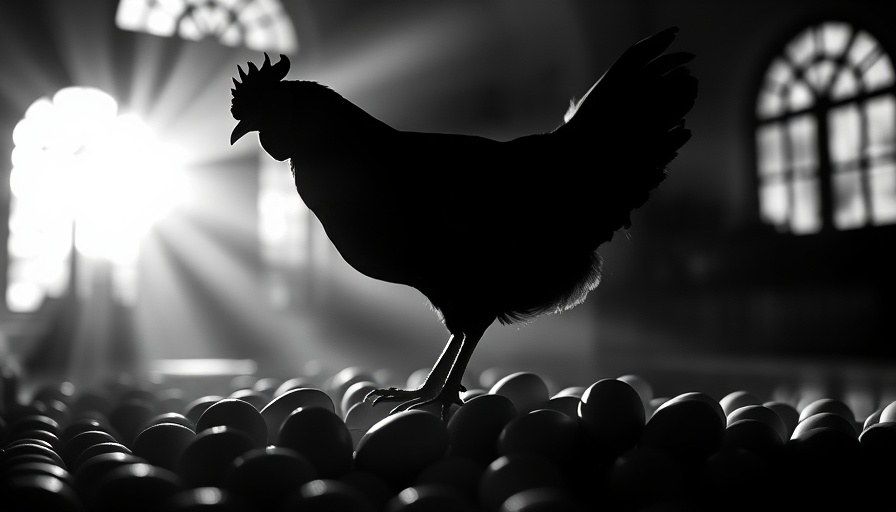
Understanding the Evolution of Bird Flu
The evolutionary journey of the bird flu virus is a stark reminder of how human influence can reshape the natural world. Initially, this virus was harmless, existing for millennia as an intestinal virus within wild ducks. Yet, due to factors such as industrial farming practices and lax biosecurity measures, it has transformed into a potentially pandemic-inducing strain. Michael Greger, M.D., in his seminal work "Bird Flu: A Virus of Our Own Hatching," emphasizes the important role we play in this evolution, urging consumers to recognize how their dietary choices affect both health and the environment.
The Pandemic Risk: Are We Prepared?
As of early 2025, the current resurgence of bird flu cases highlights an urgent need for vigilance. The risk of a human pandemic fueled by bird flu is not just theoretical; it’s increasingly plausible. Over 60 individuals in North America have already been infected, with one fatality reported. Experts warn that if the virus evolves to spread more efficiently between humans, we could face severe repercussions, echoing the lessons learned from the COVID-19 pandemic. This recent outbreak has not only awakened public health concerns but also the disarray within response protocols similar to those seen during COVID-19, as indicated by a detailed investigation from PBS News.
Lessons from Past Pandemics
The COVID-19 pandemic illuminated the critical gaps in our health systems, particularly in surveillance and response strategies for zoonotic diseases like bird flu. According to Amy Maxmen from KFF Health News, failures in controlling the virus’s spread from livestock to people may lead to crippling economic losses and public health crises if left unaddressed. Experts advocate for improved tracking of virus transmission and better funding for health infrastructure to preempt the spread of such viruses and protect vulnerable farmworker communities.
Public Health and Agricultural Responsibilities
The intersection of public health and agriculture has never been more pronounced than it is now. Current outbreaks underscore the challenge of safely managing livestock while ensuring the wellbeing of farm workers, many of whom lack adequate protective measures. The ongoing crisis illustrates a stark truth: prioritizing animal health without simultaneously safeguarding human health risks catastrophic outcomes. Notably, federal agencies such as the USDA are criticized for their slow responses and inadequate resource allocation, raising concerns about the future capabilities to manage emerging health threats.
Proactive Measures Towards Men's Health
Understanding the implications of bird flu extends beyond public health; it also intersects with personal health choices, especially for men aged 35-55. As fitness and wellness remain paramount in this demographic, integrating knowledge about zoonotic diseases into daily life can empower men to focus on not just physical health but also the health of their communities. Incorporating essential nutrients, protein sources, and testosterone-boosting foods into diets becomes even more critical amid these rising health concerns. By combining healthy meal planning with awareness of zoonotic risks, men can play a pivotal role in promoting overall health and wellness.
Call to Action: Stay Informed and Proactive
In light of the alarming developments regarding bird flu, it’s imperative for you to stay informed about emerging health risks and take proactive steps. Consulting reliable sources and ensuring your nutrition supports a robust immune system are vital strategies in this fight against potential pandemics. Understanding your role in maintaining both personal gain and public health can lead to more conscientious lifestyle choices.
 Add Row
Add Row  Add
Add 




Write A Comment